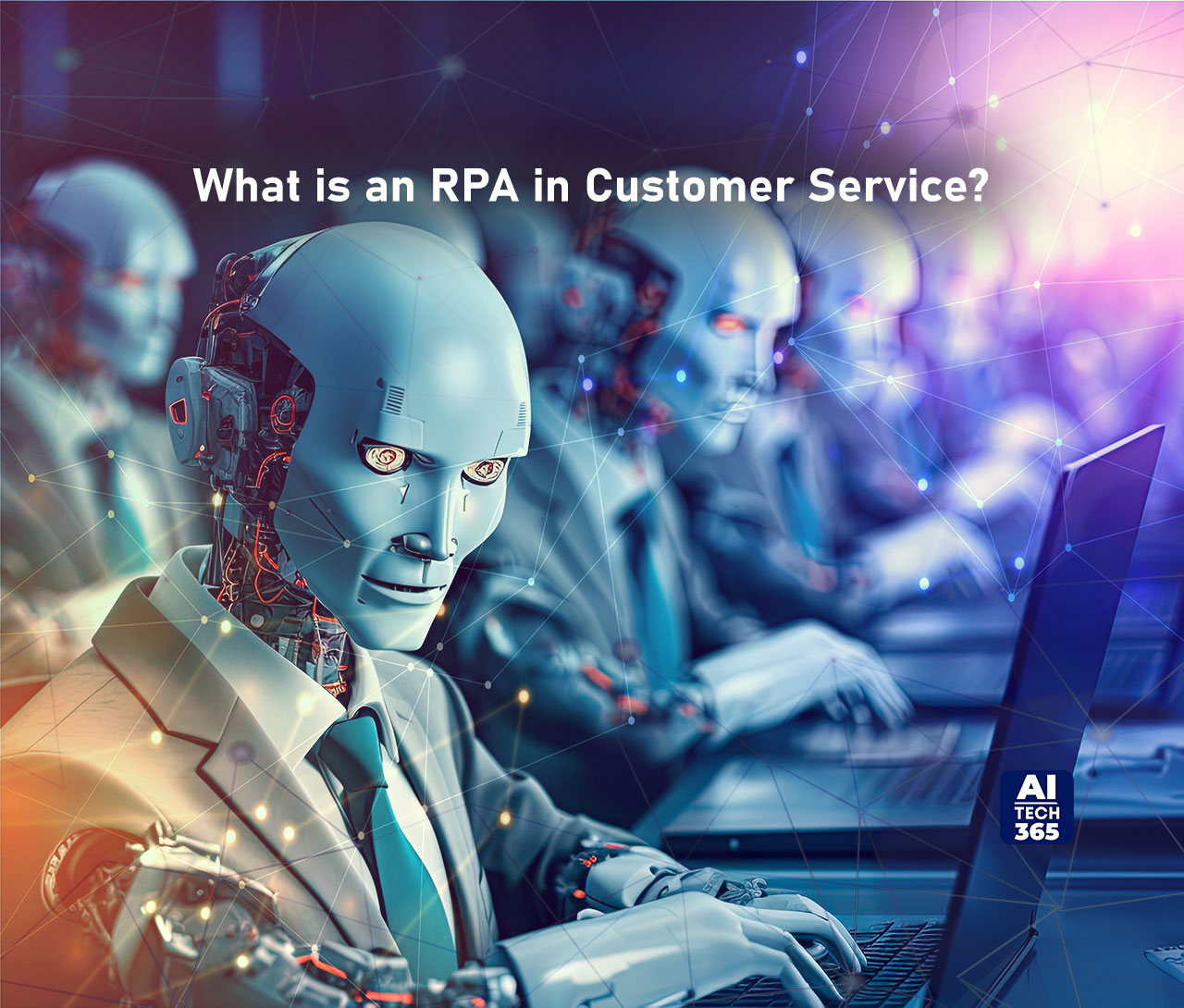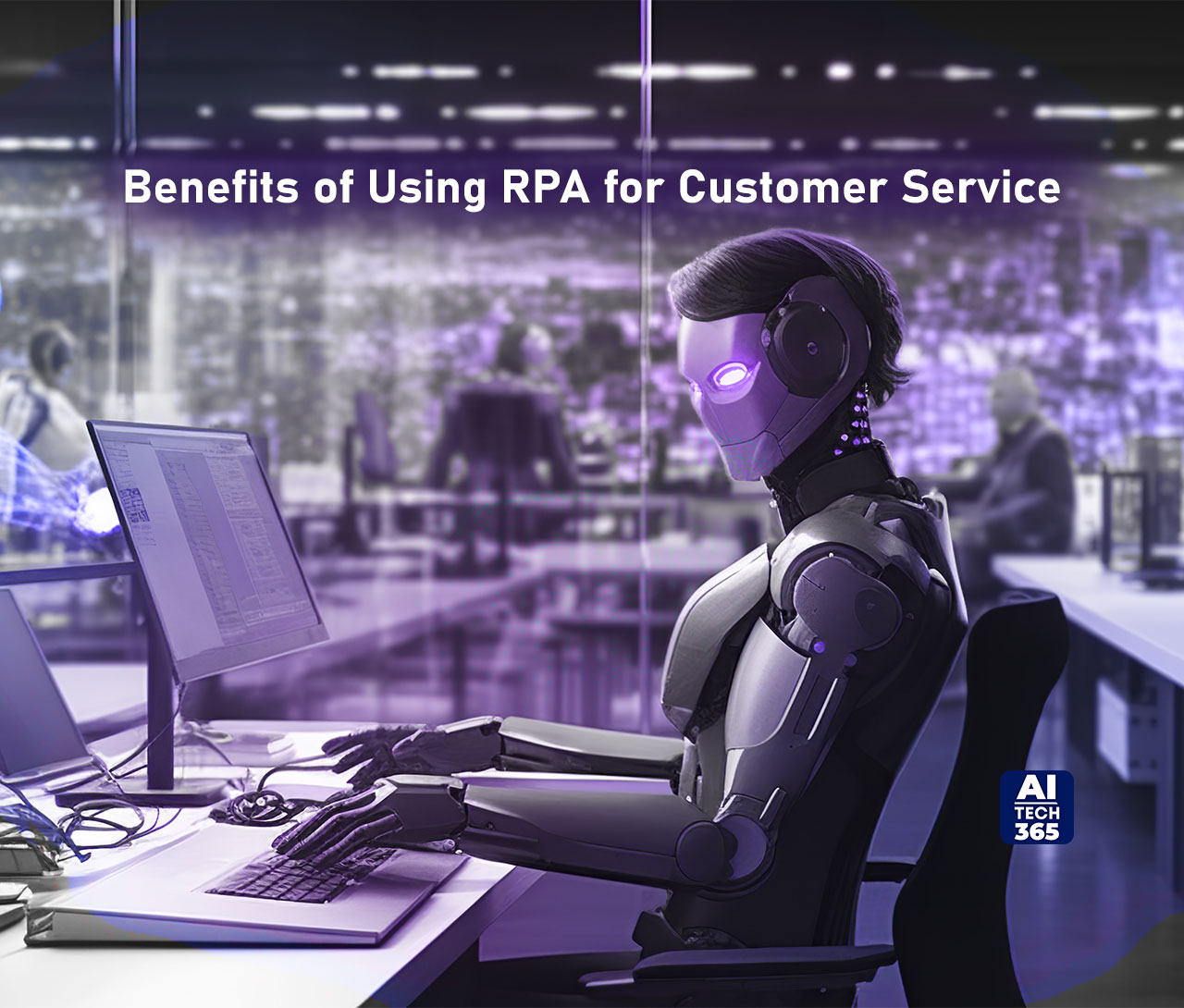Customers in today’s world don’t want to spend one minute waiting for companies. According to studies, about 68% of customers willingly pay more for services or products that offer good customer experiences (CX).
This makes sense because who wants to listen to pre-recorded messages or to businesses that offer bad CX? But then, what can companies do to bridge this gap without burning resources?
Short answer: RPA in customer service, aka robotic process automation. Let’s see how companies can use the RPA process, not only to improve customer relationships but also to boost revenue.
What is Robotic Process Automation?
Robotic process automation helps develop software robots that mimic how people perform actions with digital systems and programs. Like us, these robots can interpret what appears on computer screens, type keys, move through systems, find and collect data, and do preset tasks.
However, customer service RPA software bots surpass human abilities; they work at faster, more consistent speeds compared to us. Studies revealed that 81% of respondents invested in RPA services for efficient working in 2023. Additionally, 56% of respondents to the Robocorp survey said they would profit from open-source RPA solutions’ speed and adaptability.
What is an RPA in Customer Service?
RPA in customer service domain involves utilizing technology to streamline interactions. It encompasses automating call center operations, implementing chatbots to assist clients, and deploying voice assistants.
Incorporating RPA allows agents to prioritize complex inquiries by automating straightforward customer engagements. This approach facilitates swift responses and resolutions for simpler requests while enabling representatives to dedicate their efforts to intricate cases.
What is the role of RPA in Improving Customer Service?
RPA in customer service plays a vital role by streamlining processes and boosting overall efficiency. Here’s how RPA contributes to delivering exceptional customer service:
- Efficiency and Speed: RPA in customer service automates repetitive, mundane tasks like data entry, form filling, and order processing. By eliminating the need for manual effort in these areas, RPA accelerates response times, reduces wait times, and ensures faster resolution of customer issues and inquiries. This improved efficiency leads to higher customer satisfaction rates and fosters customer loyalty. Essentially, bots are designed with rules. They follow instructions for different situations. These guidelines determine how bots interact with data, make choices, and carry out tasks in automated processes.
- Less Errors: Human mistakes can negatively affect customer service quality. RPA robots operate precisely and consistently, minimizing errors in data work, calculations, and other routine jobs. This results in better data quality, fewer customer complaints, and increased trust in the organization’s abilities.
- Better Customer Interactions: By automating repetitive tasks with RPA, customer service reps have more time for meaningful, personalized customer interactions. They can actively listen to needs, engage in tailored talks, and provide custom solutions. The human touch improves customer engagement, builds stronger relationships, and fosters positive brand views.
- Available 24/7: RPA for customer service runs round-the-clock, enabling organizations to assist anytime, day or night. Customers can access self-service options or interact with RPA-powered virtual assistants, ensuring prompt help outside business hours too. Constant availability enhances convenience and shows commitment to exceptional service. Leveraging RPA for customer support streamlines processes, reduces errors, enhances customer interactions, and provides round-the-clock support. This leads to higher customer satisfaction, increased loyalty, and a competitive edge in delivering exceptional service experiences.
- Automation in customer support: RPA completes end-to-end processes like onboarding, account management, and complaint resolution. This ensures consistency, reduces manual work, and streamlines workflows speeding up solutions and boosting satisfaction.
- Data integration: RPA consolidates customer data from different systems and databases, giving a complete view. This empowers personalized interactions and targeted offerings. Additionally, RPA analyzes data patterns, providing valuable intel for proactive service decisions.
In essence, RPA revolutionizes customer service through efficiency enhancement, error reduction, personalization enablement, 24/7 availability, workflow automation, and data insight utilization. Leveraging RPA benefits organizations by elevating the overall customer experience, driving satisfaction, and gaining competitive market advantage.
Benefits of Using RPA for Customer Service
Automated customer service tools powered by RPA offer numerous advantages. Some key benefits are:
- Reduced Costs: When a service rep uses RPA, the time to handle each case drops significantly. This leads to major cost savings through increased efficiency. Processing expenses get slashed nearly in half.
- Enhanced Processes: RPA improves the predictability of customer service workflows. It ensures compliance with regulations, minimizes errors, and boosts efficiency. Any system changes get recorded seamlessly. Additionally, RPA bots run background checks, keeping processes updated.
- Superior Customer Experience: With 40% preferring self-service, RPA in customer service allows catering to such customers while elevating the overall experience. Implementing smart chatbots enables 24/7 customer access. Common issues get resolved anytime, any day.
- Enhanced Agent Satisfaction: RPA helps agents too, not just customers. It streamlines agents’ work and boosts job satisfaction. Agents waste time looking through multiple systems for customer info. But RPA automates that process rapidly. So agents can focus on providing better support, not busy work.
Top RPA use cases in customer service
Assist agents: Customers expect representatives to understand their needs and purchases. RPA bots retrieve customer data like purchases, demographics, previous tickets, and complaints. Delivering this info to agents helps them quickly research inquiries, and resolve issues.
Create customer accounts: In CRM databases, each customer has an account with ID, name, card info, contact details, and purchase history. Customers typically create accounts by interacting with an agent or recorded chatbot. The bot extracts relevant info from communications and fills out forms to create the account. It validates payment mode against bank info and notifies customers of finalized account details.
Process refunds: RPA bots extract refund inquiries from ticketing systems, emails, and texts. Bots begin refund processes without human intervention. They send notifications via text/email when refunds are complete.
RPA in customer service deals with problems based on pre-defined rules. These instructions tell them what to do in various situations. Rules define how bots process data, make choices, and perform tasks automatically. They gather info about issues and store it in the ticket system. The bots link to the ticket database. They automatically solve customer questions, like
- Order changes (get return code, change delivery address)
- customer login details
- renewed passwords
Update payment info (pay at door, new credit card): RPA bots also refresh CRM data automatically. They take data from business databases. Examples are talks with customer service staff, past buys, documents and reports, cold calls, and emails. The bots update this into CRM data. For example: lead scoring, order history, and contact history. They use new texts, emails, reports filed, and online surveys.
A workflow for fixing issues gets made based on the priority level assigned. The customer then receives notice of the refund choice.
Final Takeaway
Automating repetitive tasks with RPA in customer service transforms customer experience. It minimizes mistakes, enables personalized interactions, and ensures 24/7 availability. Organizations leveraging RPA boost operational efficiency, enhance customer satisfaction, and build stronger relationships. RPA empowers representatives to focus on meaningful interactions while software robots handle mundane tasks. This results in faster response times and improved customer experiences. Streamlining processes and providing valuable insights, RPA revolutionizes delivering exceptional customer service in today’s digital age.





